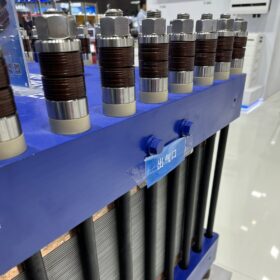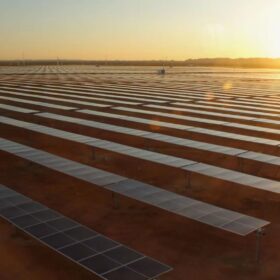From pv magazine global
The distributed storage market is poised for tremendous growth in the next nine years. Analysts from market intelligence company Navigant Research have made a bullish forecast in their Country Forecasts for Distributed Energy Storage report.
Falling costs for solar and storage, diverse business models and breakthroughs in storage enabling technologies will drive a near-twentyfold expansion in the distributed storage market up to 2028, according to the study, from 1,073 MW of new capacity additions per year at present, to 19,878 MW.
It will be the usual suspects initially driving installation, as far as geography is concerned, but Navigant says falling costs and new business cases will eventually see small scale energy storage expand into new regions.
This year, Germany, Japan, China, the U.S. and U.K. will account for 78% of the global market, thanks to suitable business environments, incentives, rates and established distributed energy storage companies. Italy, Australia, India, France and South Korea round out the top 10.
Utility role
The ability, and will, of utilities to enable the owners of such small scale storage systems to realize value from their investment will be critical, say the analysts. Breakthroughs including blockchain, artificial intelligence and the aggregation of systems to provide grid balancing services are driving adoption.
In California, for example, the Investment Tax Credit, falling solar module and lithium-ion battery prices and an overhaul of the Self Generation Incentive Program (SGIP) have made it cheaper than ever to go off-grid. Customers of utilities Pacific Gas & Electric Co, Southern California Edison, SoCalGas and San Diego Gas & Electric are eligible for SGIP rebates of around $400/kWh off the purchase price of battery systems.
As utilities accept the large scale deployment of small batteries reduces grid congestion and peak capacity demands they have begun to dangle incentives in front of customers and such measures are expected to be the main driver of storage adoption, according to Navigant analysts.
In Japan, reductions in the feed-in tariff (FIT) and net metering payments made to the owners of PV systems have persuaded households to adopt energy storage to maximize returns. Around 500,000 households began installing solar generation systems in 2009 to receive a ten-year FIT set at ¥48/kWh ($0.44). As the first of those FIT payment agreements expires, demand is rising for residential storage.
Another driver for small scale storage involves raising self-consumption, in markets where demand and time-of-use based charges are being introduced.
This content is protected by copyright and may not be reused. If you want to cooperate with us and would like to reuse some of our content, please contact: editors@pv-magazine.com.









“In California, for example, the Investment Tax Credit, falling solar module and lithium-ion battery prices and an overhaul of the Self Generation Incentive Program (SGIP) have made it cheaper than ever to go off-grid. Customers of utilities Pacific Gas & Electric Co, Southern California Edison, SoCalGas and San Diego Gas & Electric are eligible for SGIP rebates of around $400/kWh off the purchase price of battery systems.”
I would not characterize it as going off grid. Like Australia, there’s a lot of Southern California that is desert and can be really vicious during those summer months. Some 51,000 square miles, 132,000 square kilometers have experienced 37 to 46 degrees Celsius during summer months. The average air conditioning unit is around 1.5KwH per ton of cooling. many homes take a 5 ton unit to stay cool in the summer and must run 24/7 due to the night time “cool down” temperatures only getting to lows of 32 to 35 degrees Celsius. 180kWh a day for air conditioning alone puts a big crimp on going off grid.
What it is doing, due to the PG&E practice of the PSPS (Public Service Power Shutdown) used to keep power lines from causing wild fires during wind storms, is pushing people to get a smart ESS and wiring in “critical circuits” in the home that can keep the lights on, refrigerator/freezer operational and microwave for a quick meal, while PG&E keeps power off “until” the lines have been inspected and or repaired.